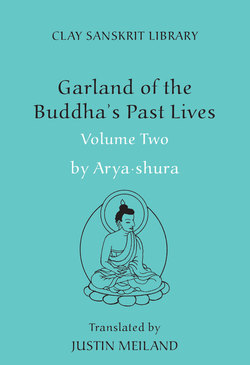Читать книгу Garland of the Buddha's Past Lives (Volume 2) - Aryashura - Страница 20
На сайте Литреса книга снята с продажи.
Оглавлениеunique to the “Garland of the Buddha’s Past Lives.” However, the fact that they are grouped together in the present volume is noticeable and points to important thematic continuities running through the tales.
There are doctrinal problems involved in depicting the Bodhi·sattva as an animal. According to Buddhist thought, animal rebirth derives from bad karma and thus raises a potential question mark over the purity of the Bodhi·sattva’s karmic history. Moreover, while animals have the ability to act morally, their potential for virtue is usually restricted in comparison to humans. The issue of whether the Bodhi·sattva suffers from bad karma is raised by a verse in “The Birth-Story of the Buffalo’ (33.6 [3]): “Some trace of karma must have affected him to be reborn this way.” Normally, however, the problem is sidestepped by simply extolling the Bodhi·sattva as a superior being whose virtue transcends the norms of animal nature.10 “The Birth-Story of the Great Monkey’ (24.4) thus states: “Even though he was a monkey, the Bodhi·sattva had lost none of his moral awareness. Grateful and full of vast fortitude, his nature was devoid of anything lowly.” The Bodhi·sattva’s virtue is seen as a constant and unchanging attribute, despite his animal rebirth:
The earth with its forests, fine peaks and seas
may through water, fire and wind
perish a hundred times at an eon’s end,
but not the great compassion of the Bodhi·sattva.
(24.5 [1])
Numerous references are made to the abnormal quality of the virtue displayed by the Bodhi·sattva as an animal. ________
